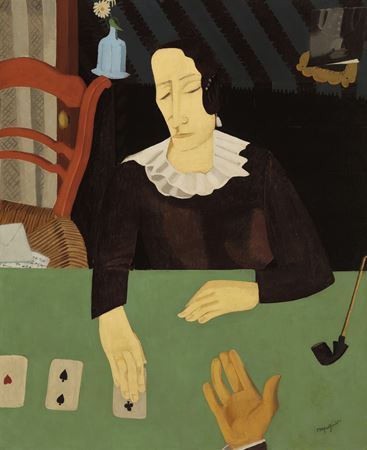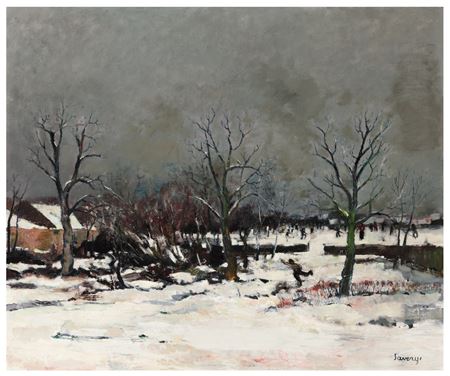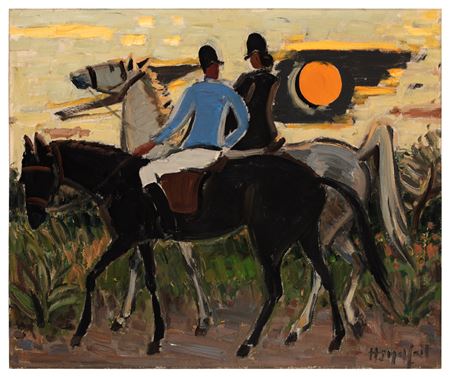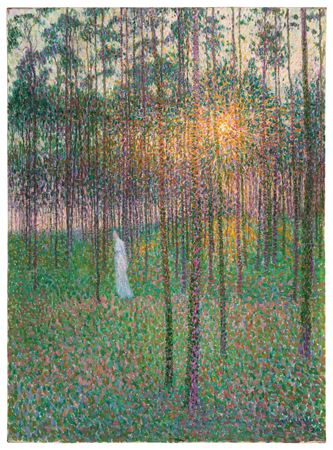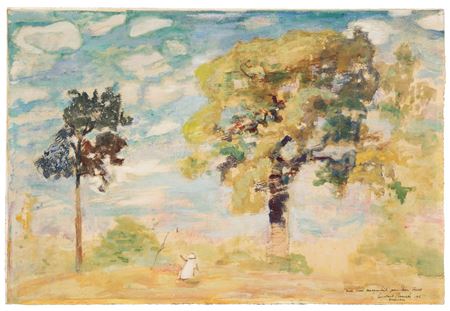Frits Van den Berghe
(1883-1939)Creatures / Floating figures
1932Oil on canvas
116 x 89 cm (45 ⁵/₈" x 35")
Framed: 143 x 116 cm (56 ¹/₄" x 45 ⁵/₈")
Signed and dated lower right: FVBerghe / 32
Signed and dated lower right: FVBerghe / 32
Contact Us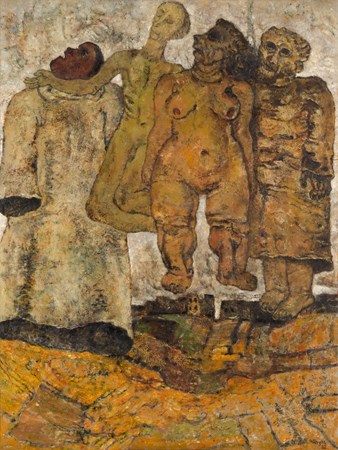
Literature


- Baronian, J.-B., Dictionnaire amoureux de la Belgique (Paris: Editions Plon, 2015).
- Boyens, P., Laethem-Saint-Martin L'Art du Symbolisme à l'Expressionisme (Tielt: Lannoo, 1992), p. 528 (ill.).
- Boyens, P., Frits Van den Berghe: catalogue raisonné (Gent: SD&Z, 1999), p. 318-319, 461, no. 762 (ill.).
- Boyens, P. & G. Marquenie, Retrospectieve Frits Van den Berghe, exh. cat. (Ostende: PMMK, 1999), p. 168-169, no. 139 (ill.).
- Boyens, P., Laethem-Saint-Martin L'Art du Symbolisme à l'Expressionisme (Tielt: Lannoo, 1992), p. 528 (ill.).
- Boyens, P., Frits Van den Berghe: catalogue raisonné (Gent: SD&Z, 1999), p. 318-319, 461, no. 762 (ill.).
- Boyens, P. & G. Marquenie, Retrospectieve Frits Van den Berghe, exh. cat. (Ostende: PMMK, 1999), p. 168-169, no. 139 (ill.).
Exhibitions


- 1999, Ostend, PMMK, Retrospectieve Frits Van den Berghe, 16.10.1999-13.02.2000, cat.no. 139.
Provenance


Collection Mr Van Regenmortel, Meudon. He purchased the painting directly from the artist in 1932.
Description


Around 1930, the conflict between man and woman became central to Frits Van den Berghe's oeuvre. Unlike his friend Gust. De Smet, who always portrayed a harmonious conjugal life, Van den Berghe focused on the often unspoken struggle between the sexes. Van den Berghe did not accentuate their mutual understanding, but rather their different drives. We find this duality in the painting Beings (also known as Floating figures). Two naked figures, a man and a woman, are floating above the city in the center of the image. The man has raised his knees and therefore even seems to kneel in his floating position. With closed eyes he points to the woman something that is outside the image. The almost Permekian woman is as big as he is. Her eyes follow the man's gesture; the profile of her head contrasts with the frontal view of the rest of her sturdy body. On the left and right, the man and the woman are surrounded by two monumental figures. On the left, and slightly lower than the other three figures, a tall man is depicted, wrapped in what looks like a white monk's robe. He too follows the man's gesture and seems to be impressed by the unknown event that takes place outside the picture plane. His curiosity is not shared by the strange figure on the far right. He does not share the attention of the other three figures; his gaze is rather directed at the viewer. Different tensions are present in the painting. This suggests the leadership of the man who shows the way, with the attentive monk next to him. Whether the woman will follow the man is not clear, however. Furthermore, the impression of a religious event is created, possibly a resurrection. The stigmas of Christ may or may not have the naked man, but his self-confidence and persuasion give him the aura of a spiritual leader. Or did Van den Berghe not just propose a couple who, despite his marriage bond, does not form a unity and is driven by different instincts?
You May Also Like





